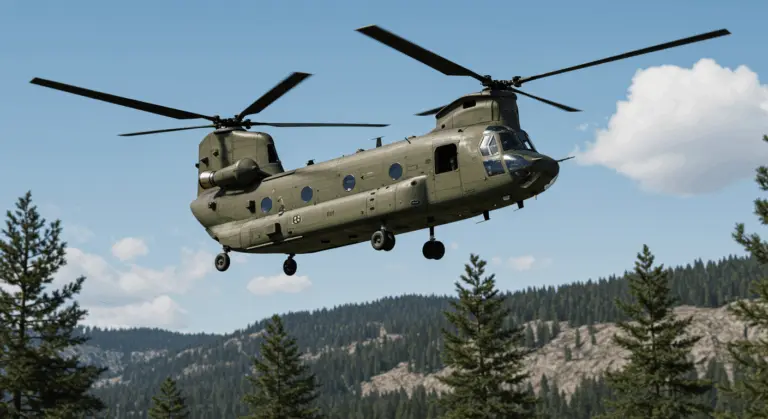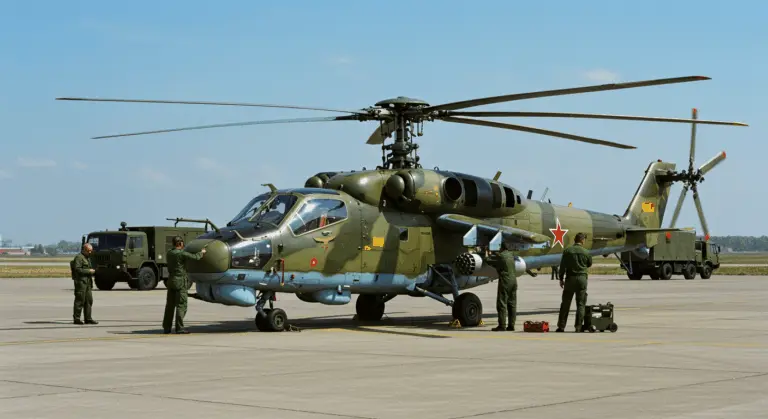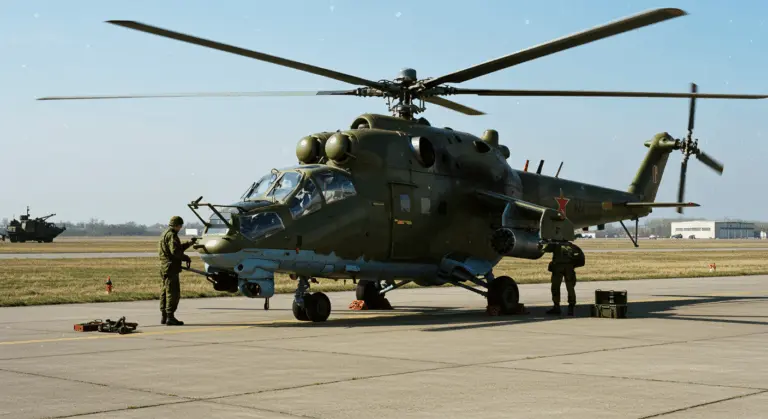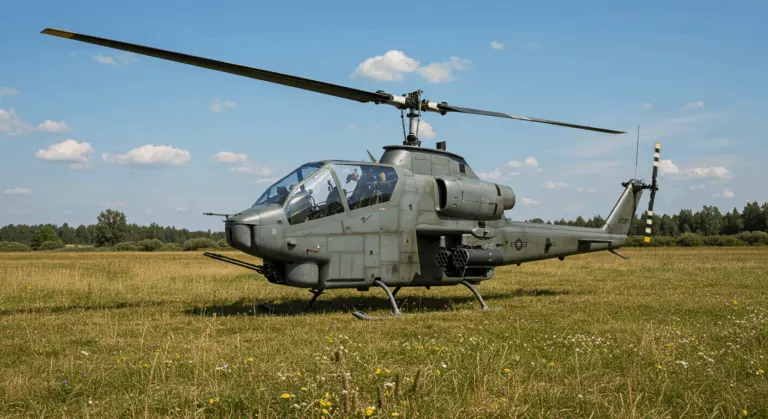Overview of the Bell 206 Helicopter
The Bell 206 stands as one of aviation’s most iconic helicopters—a machine that transcended its military origins to become a legend. Born from the Bell YOH-4 prototype for the United States Army’s Light Observation Helicopter program in the 1960s, this versatile aircraft developed into a family of two-bladed, single- and twin-engined helicopters. It has influenced both civilian and military aviation sectors, leaving an indelible mark on rotary-wing history.
Since its 1967 debut, the Bell 206 achieved remarkable commercial success with more than 7,300 units produced over its production run. Rolling off the production lines at Bell Helicopter’s Mirabel, Quebec facility, this helicopter family has become the very definition of reliability and versatility in rotary-wing aviation.
The Bell 206’s widespread adoption demonstrates adaptability. From law enforcement patrols to emergency medical rescues, from offshore operations to scenic tourism flights—this helicopter has excelled across countless sectors. Its unmistakable silhouette has graced movie screens and television shows worldwide, transforming it from mere aircraft into cultural icon. Few helicopter designs can claim such enduring success in aviation history.
Key Features and Specifications of Bell 206
Performance-wise, the Bell 206 offers strong performance: a never-exceed speed of 130 knots, maximum cruising speed of 120 knots, and operational range of 374 nautical miles. This performance provides excellent mission flexibility for operators.
The Bell 206 features compact dimensions. At 39.8 feet in length with a 33.4-foot main rotor diameter and 9.4-foot height, it strikes an ideal balance between capability and maneuverability. Empty weight varies by model—from approximately 1,713 pounds for early versions to 2,331 pounds for the 206B-3. With a maximum takeoff weight of 3,200 pounds, operators enjoy substantial useful load capacity for passengers or cargo.
The aircraft’s performance capabilities are substantial. It achieves a service ceiling of 13,500 feet and demonstrates a robust rate of climb at 1,350 feet per minute. Its disc loading of 4 pounds per square foot, combined with a power-to-mass ratio of 0.26 horsepower per pound, provides the responsive handling that have made the Bell 206 legendary. These specifications enable effective operation across diverse mission profiles and challenging environmental conditions.
Engine and Performance Metrics
The Bell 206 is powered by a Rolls-Royce (formerly Allison) 250-C20J turboshaft engine, generating 420 shaft horsepower. However, for operational longevity and enhanced reliability, it’s typically derated to 317 shaft horsepower—a conservative approach that has contributed significantly to the helicopter’s reputation for dependability.
Design and Aerodynamics
The Bell 206’s enduring success results from its masterful aerodynamic design. Its two-bladed main rotor system represents engineering elegance—striking a perfect balance between simplicity, reliability, and performance. This approach prioritizes proven effectiveness over complexity. This design philosophy reduces mechanical complexity while delivering ample lift and control authority for diverse missions. The semi-rigid rotor system incorporates a stabilizer bar that enhances stability, proving invaluable during hover operations and in turbulent conditions.
The fuselage demonstrates aerodynamic efficiency through its streamlined profile, minimizing drag while maximizing internal volume. The teardrop-shaped cabin offers exceptional visibility for pilot and passengers alike through expansive windows. Meanwhile, the tapering tail boom houses the tail rotor assembly at optimal distance from the main rotor, ensuring precise directional control and inherent stability.
Aerodynamic refinement extends to the tail rotor design—a two-bladed configuration positioned strategically on the right side of the tail boom. This arrangement effectively counteracts main rotor torque while maintaining the aircraft’s sleek profile. The vertical stabilizer incorporates a small horizontal stabilizer that enhances directional stability during forward flight, demonstrating attention to aerodynamic detail throughout the design.
The Bell 206’s skid landing gear represents a practical engineering solution. It offers simplicity and weight savings over wheeled alternatives while providing adequate ground clearance and stability during landing operations. This unretractable design contributes to overall aerodynamic efficiency by eliminating the complexity and weight penalties associated with retractable systems.
These aerodynamic elements combine to create the Bell 206’s celebrated handling characteristics. Pilots enjoy responsive control inputs, excellent stability across the flight envelope, and predictable behavior during critical phases like takeoff, landing, and autorotation. The helicopter’s aerodynamic efficiency also enhances fuel economy and range capabilities, further amplifying its versatility across diverse operational environments.
Variants of the Bell 206
The Bell 206 family has evolved into several main variants:
-
Bell 206A/B Jet Ranger: The initial production model and its subsequent improvements.
-
Bell 206L Long Ranger: A stretched version with increased passenger capacity.
-
Bell 206LT Twin Ranger: A twin-engine development of the Long Ranger.
-
Bell 407 and 417: Advanced, four-bladed rotor derivatives of the 206L design.
The Bell 206A Jet Ranger launched the production lineage, later refined into the improved Bell 206B version. The Bell 206B-3, featuring an upgraded Allison 250-C20B engine, emerged as one of the most beloved configurations, offering enhanced performance and excellent reliability. Augusta-Bell expanded the family through licensed production of several variants, including the Augusta-Bell 206A and 206B models.
The Bell 206L Long Ranger series represented a major development with its stretched fuselage accommodating five passengers—a significant upgrade from the standard four in Jet Ranger models. This variant achieved exceptional market success, progressing through multiple iterations: the 206L-1 Long Ranger II, 206L-3 Long Ranger III, and 206L-4 Long Ranger IV. Each generation brought progressive improvements in performance and operational capabilities.
The Bell 407, though technically a distinct model, represents a remarkable evolution of the 206L design. It features a four-blade main rotor system and more powerful engine, extending the design capabilities. Similarly, the Bell 417 emerged as an enhanced variant with superior high-altitude and hot-weather performance capabilities.
International production expanded the Bell 206’s international presence. The Iranian ESA Shaped 278 represents a locally manufactured variant, while specialized research platforms like the Aurora Flight Sciences Tactical Autonomous Aerial Logistics System have utilized the Bell 206 airframe as a foundation for cutting-edge technology development.
Civilian Variants and Their Uses
The Bell 206 family has established a strong position in civilian helicopter markets, with variants tailored to diverse operational demands. The Bell 206A Jet Ranger and its successor, the 206B, have become commercial aviation staples. These models excel in roles demanding maneuverability and cost-effective operation—aerial photography, survey work, corporate transport, and tourism operations. Their relatively modest operating costs and consistent reliability have made them particularly popular among helicopter tour operators in scenic destinations worldwide.
The Bell 206L Long Ranger series marked a major advancement, featuring a stretched fuselage that significantly improves utility. Its increased capacity and superior performance specifications have made Long Ranger variants the preferred choice for applications requiring additional passenger or cargo capacity. The Long Ranger lineage progressed through several iterations—206L-1, L-3, and L-4—each delivering incremental improvements in performance, avionics, and passenger comfort.
Specialized civilian applications demonstrate the Bell 206’s versatility. In emergency medical services (EMS), modified versions provide rapid patient transport, featuring custom interiors that accommodate medical equipment and stretchers. Law enforcement agencies worldwide have embraced Bell 206 variants for patrol, surveillance, and search operations. These aircraft often carry specialized mission equipment including searchlights, public address systems, and video recording capabilities.
The utility sector is another important civilian market. Bell 206 variants perform essential roles in pipeline inspection, power line maintenance, and agricultural operations. While their lifting capability remains modest compared to larger helicopters, it proves perfectly adequate for many light utility tasks while maintaining economical operating costs. The helicopter’s reliability and straightforward maintenance requirements have made it particularly attractive to operators in remote regions where maintenance support may be limited.
Military Variants and Applications
The Bell 206’s military journey began with the OH-58 Kiowa, developed for the United States Army as a light observation helicopter. Despite the original YOH-4 losing the initial Army competition, the refined OH-58 variant became central to Army aviation. It served in diverse roles—from reconnaissance and target acquisition to light attack missions. The OH-58 series evolved through multiple variants, leading to the advanced OH-58D Kiowa Warrior with its distinctive mast-mounted sight and enhanced weapons capabilities.
Naval applications embraced the Bell 206 platform through the TH-57 Sea Ranger, adopted by the United States Navy for training purposes. The TH-57A, based on the commercial 206A Jet Ranger, provided fundamental helicopter flight training. More advanced TH-57B and TH-57C variants offered instrument and advanced training capabilities. The TH-67 Creek, derived from the 206B-3, served similar training roles for the United States Army.
International military operators have tailored various Bell 206 variants to meet their specific operational requirements. The Canadian Armed Forces operated the CH-139 Jet Ranger for training and utility missions, while the Swedish Armed Forces designated their Bell 206s as the HKP 6A and HKP 6B for similar roles. The Bell 206AS represented a militarized version with enhanced capabilities for specialized mission profiles.
The Bell 206L Texas Ranger emerged as a specialized military variant equipped with mission-specific capabilities and equipment. This adaptability to military requirements across different services and nations demonstrates the fundamental soundness of the Bell 206 design. Its suitability for adaptation to diverse operational environments and mission profiles demonstrates the original engineering excellence.
Military applications of Bell 206 variants have included:
-
Reconnaissance and forward observation
-
Liaison and training
-
Light transport
-
Limited attack roles
Operational History and Legacy
The Bell 206’s operational history covers more than five decades, making it one of aviation’s most successful helicopter designs. Since its 1967 introduction, the Bell 206 family has accumulated millions of flight hours across every conceivable operational environment. From arctic conditions to desert heat, it has shown exceptional versatility and reliability. Despite initially losing the U.S. Army’s Light Observation Helicopter competition (where it bore the YOH-4 designation), Bell’s decision to refine the design for commercial applications proved highly successful.
The helicopter quickly gained acceptance in civilian markets, becoming ubiquitous in corporate, public service, and utility sectors. Its widespread adoption by emergency medical services providers further solidified its reputation as a versatile, dependable platform.
Military operators worldwide recognized the Bell 206’s capabilities, with numerous armed forces adopting variants for training, observation, and utility missions. The U.S. Army’s eventual adoption of the OH-58 Kiowa—derived directly from the Bell 206—marked a significant validation in the helicopter’s history. It validated the fundamental design excellence despite that initial competition setback.
The Bell 206’s cultural impact extends beyond its operational success. Its distinctive profile has become instantly recognizable to the public through countless appearances in films, television shows, and news broadcasts. This extensive media presence has established the Bell 206 as the archetypal light helicopter in popular consciousness—much like the UH-1 “Huey” defined military helicopter imagery for entire generations.
The Bell 206’s legacy is built on its profound influence on helicopter design philosophy, that prioritized simplicity, reliability, and operational efficiency as core principles. Thousands of units remain in active service worldwide—a living testament to the design’s enduring quality. Its influence continues through descendant models that carry forward the very characteristics that made the original so remarkably successful.
Cost and Market Analysis of Bell 206
The Bell 206 helicopter requires significant capital for operators, with acquisition costs varying dramatically based on model, age, condition, and equipment specifications. New production Bell 206L-3 Long Ranger models commanded approximately $1,000,000 before production ceased. Pre-owned examples typically range from $650,000 for well-maintained, low-time airframes to significantly less for older or higher-time aircraft. Across the entire Bell 206 family, historical unit costs have ranged from $900,000 to $1.2 million for new aircraft, depending on variant and configuration.
The pre-owned market for Bell 206 helicopters stays strong, reflecting the type’s enduring popularity and proven utility. Several factors influence resale values: total airframe hours, time remaining before major component overhauls (particularly engines and transmissions), avionics upgrades, and interior condition. Aircraft with recently overhauled dynamic components or upgraded avionics typically command premium prices in the secondary market.
Operating economics represent a critical consideration for Bell 206 operators. Direct operating costs fluctuate based on usage patterns, maintenance approaches, and regional factors. However, the helicopter’s relatively simple design and extensive support network help contain expenses compared to more complex aircraft types.
The Bell 206’s market position has changed considerably as production has ceased, and newer models have entered service. While no longer rolling off production lines, its massive installed fleet ensures continued robust demand for parts, maintenance services, and upgrades. This extensive operational fleet maintains extensive support infrastructure—including third-party maintenance providers, parts suppliers, and modification specialists.
Investment considerations for potential Bell 206 operators go well beyond acquisition costs. Critical factors include parts availability, maintenance support accessibility, insurance costs, and potential for future upgrades. The helicopter’s established track record and broad operator base help mitigate investment risks, while its proven capabilities across diverse mission profiles enhance long-term utility and value retention. For many operators—particularly those in specialized sectors like aerial survey, utility operations, or training—the Bell 206 remains a cost-effective solution despite newer alternatives entering the market.
Frequently Asked Questions about Bell 206
What is the typical operating cost of a Bell 206 helicopter?
Bell 206 helicopter operating costs average approximately $930 per flight hour, though this figure varies considerably based on several factors. These include maintenance approach, operational profile, and regional differences in fuel and labor costs. This figure encompasses direct costs such as fuel, routine maintenance, parts, and reserves for major component overhauls.
How many passengers can a Bell 206 accommodate?
The standard Bell 206B Jet Ranger seats one pilot plus four passengers in its cabin configuration. The stretched Bell 206L Long Ranger variant increases this capacity to five passengers plus one pilot, making it considerably more suitable for applications requiring additional seating or internal cargo space.
What is the range of a Bell 206 helicopter?
The Bell 206 delivers approximately 374 nautical miles (430 statute miles or 693 kilometers) of range on standard fuel tanks. However, actual operational range varies based on payload, weather conditions, reserve fuel requirements, and selected cruise speed.
How reliable is the Bell 206 helicopter?
The Bell 206 is widely recognized for its reliability, which contributed to its commercial success. The helicopter’s straightforward design, particularly its two-bladed rotor system, minimizes mechanical complexity and potential failure points. Many operators report dispatch reliability rates exceeding 95% when maintained according to manufacturer recommendations.
What are the maintenance requirements for a Bell 206?
Bell 206 maintenance follows a structured schedule of regular inspections and component replacements based on flight hours and calendar time. Key maintenance milestones include 100-hour inspections, annual inspections, and major component overhauls—engine overhauls typically occur at 3,500-4,500 hours, while transmission overhauls range from 2,500-5,000 hours depending on the specific component. The helicopter’s straightforward design generally makes maintenance less labor-intensive compared to more complex helicopter types.
Is the Bell 206 still in production?
No, Bell Helicopter has discontinued production of the original Bell 206 family. The Bell 407, which evolved from the 206L series, represents Bell’s current production offering in this size class. However, the extensive existing fleet ensures continued comprehensive support for the Bell 206 series for the foreseeable future.
What are the most common uses for Bell 206 helicopters?
Bell 206 helicopters serve remarkably diverse roles: corporate transport, aerial photography and filming, law enforcement operations, emergency medical services, flight training, utility operations (such as power line inspection), tourism, and private ownership. Their exceptional versatility and relatively modest operating costs make them ideal for an extensive range of missions requiring a capable light helicopter.




